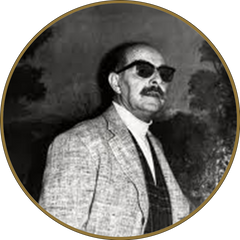Nino Caffé biography

Nino Caffè, born Giovannino Caffè, was an Italian painter and engraver. He was born on 24 June 1908 in Alfedena, Abruzzo. After completing his elementary studies in L'Aquila, in 1923 he moved with his family to Ancona, where he began to attend the painting courses of Ludovico Spagnolini and sculpture of Vittorio Morelli . In 1930, after getting married, Nino Caffè settled permanently in Pesaro, a city that offers a lively artistic and cultural environment. Here he came into contact with various local artists, including Bruno Baratti, Werter Bettini, Ciro Cancelli, Alessandro Gallucci, Aldo Pagliacci and Achille Wildi.
Already in 1931 he began to exhibit his works and in 1938 participates in the Venice Biennale, where he obtains a purchase prize from King Vittorio Emanuele III. In 1935 he graduated from the State Art Institute of Urbino, where he subsequently taught "figure" in the years 1943 and 1944. During the period spent in Urbino, guest of the Benedetti family, the artist had the opportunity to observe the seminarians and the priests who passed in front of the house, a theme that would characterize his future painting.
Nino Caffè actively participated in the cultural life of Urbino and in 1948 he became a member of the Raphael Academy. In 1944, the Galleria Gianferrari in Milan dedicated a major exhibition to him, while in 1946, in Pesaro, he held a solo exhibition in the gallery of Rossini's birthplace. From that moment, he began to enjoy real success, opening a studio in Rome and collaborating with the Galleria dell'Obelisco , directed by Gaspare Del Corso and Irene Brin, which also opened an office in New York . The Metropolitan Museum purchases one of his works.
Nino Caffè's works have been appreciated by major European and American collectors, consecrating the painter of the priests to international fame. His painting is characterized by a vibrant design, a refined chromatic composition and a particular technical skill. In addition to religious themes, the artist also explores other social themes and, in recent years, develops a more dramatic intonation, reflecting on the theme of death.
Nino Caffè died in Pesaro on 17 May 1975, at the age of 66 years, following a cardiovascular collapse. His works are mainly held in private collections, but some paintings are also found in important museums such as the Museum of Modern Art in New York and the Boston Museum.




: invalid url input -->)